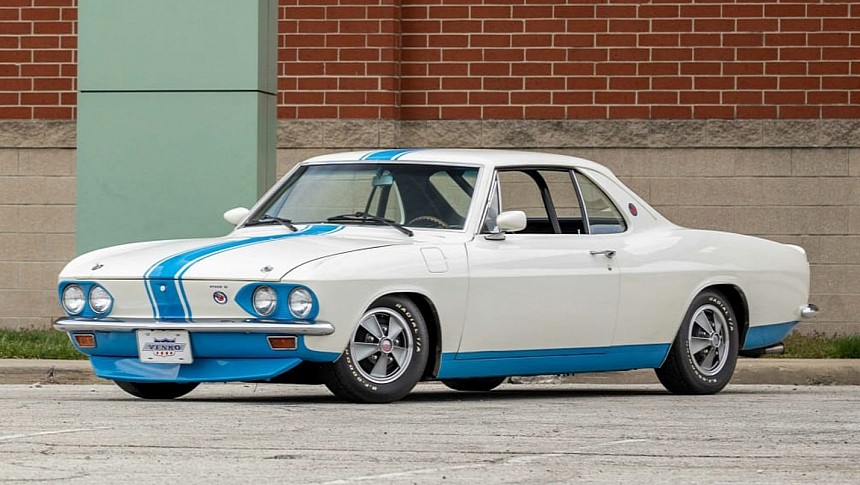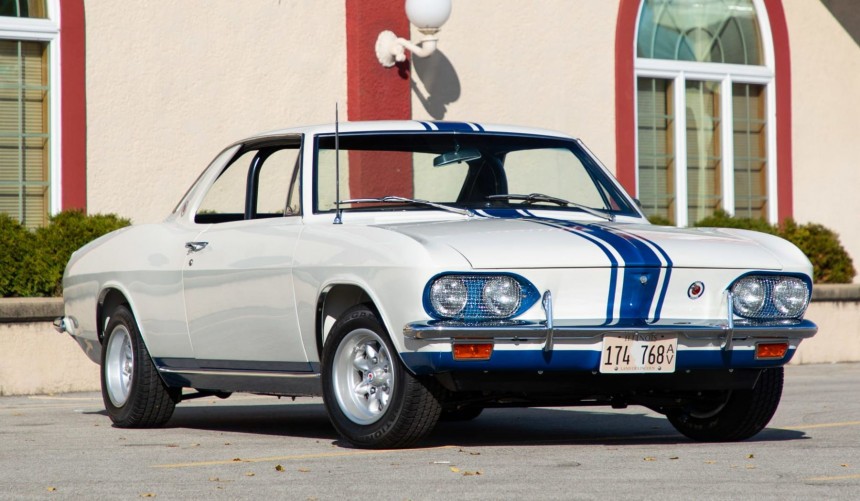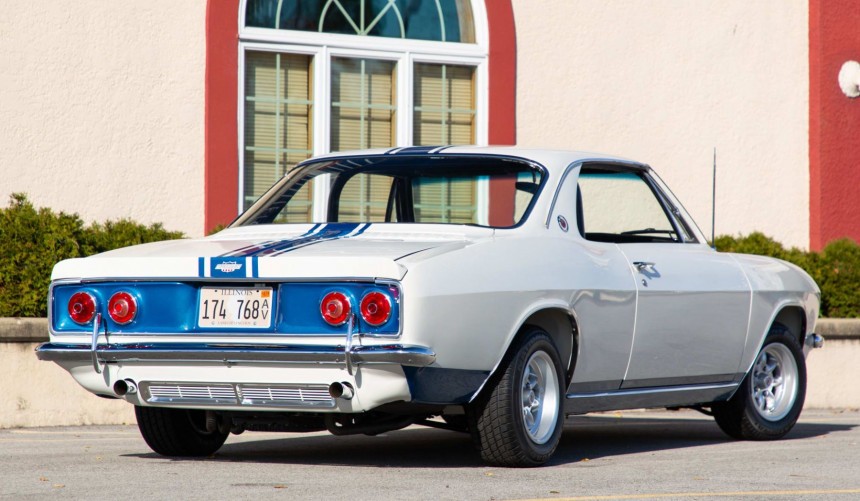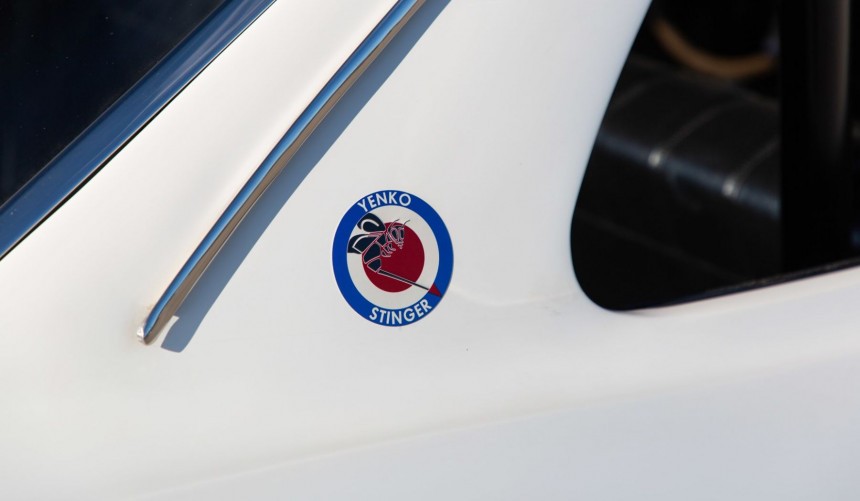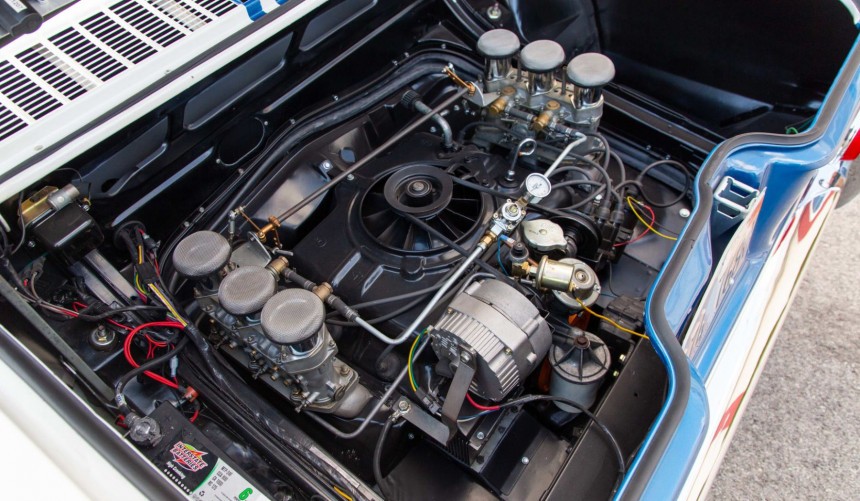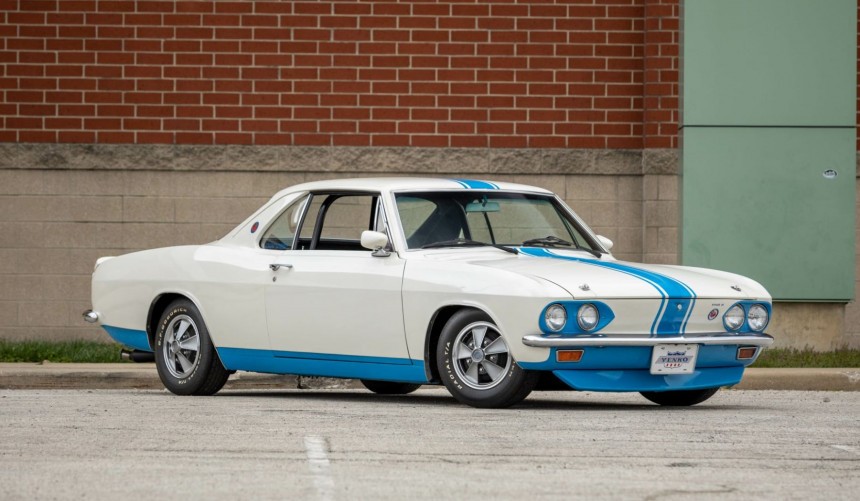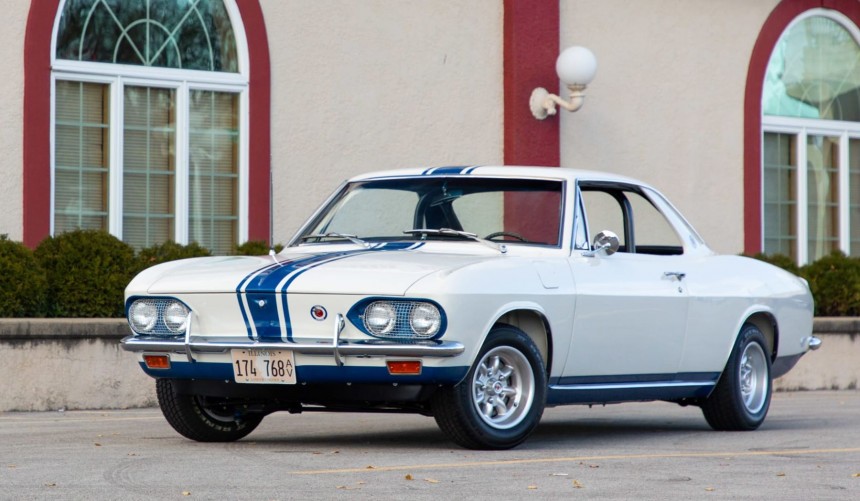Before becoming famous worldwide for stuffing obscenely powerful big-block V8s into the engine bays of Camaros or Novas, Don Yenko transformed Chevy's compact Corvair into a legitimate sports car.
In 1957, the 30-year-old Donald "Don" Frank Yenko took the reigns of his father's Chevy dealership in Canonsburg, Pennsylvania.
In just a few years, his dealership became the Mecca of high performance among Chevy owners who traveled from all four corners of the country to buy performance parts or have their cars upgraded by Yenko's talented team.
During the 1950s, Don Yenko also realized his dream of becoming a race driver, competing in Sports Car Club of America (SCCA)-sanctioned races behind the wheel of Corvettes prepped by him and his crew.
By 1965, he was a two-time national champion, but the arrival and instant success of friend Carroll Shelby's GT350Rs gave him a wild idea.
Since the Camaro was still nearly two years away from hitting the market and the Chevys of the day - like the Corvette - were becoming too big and heavy to be competitive against smaller and lighter cars such as the GT500, Yenko decided to borrow Shelby's recipe and build his own lightweight race car.
Rather than directly competing against the GT350 in the SCCA B Production class, Yenko chose the oddball of the Chevy lineup, the newly-introduced, second-generation Corvair, aiming to win the D Production class.
Though it was reasonably lightweight, featured a fully independent suspension, and had a good weight distribution thanks to its rear-mounted flat-six, the Corvair was anything but a sports car.
Don Yenko was ready to transform it into one. Still, to gain SCCA homologation for the 1966 season - which the Corvair didn't qualify for in stock form - he needed to build at least 100 examples of his modified version before January 1966.
Though it seemed like an impossible task, Yenko proceeded to order 100 units of the Corsa-spec compact (the sportiest stock Corvair) in December 1965.
Throughout the month, Yenko and his crew worked from dusk till dawn every day (except Christmas day), managing to convert the batch of Corvairs into what they dubbed Yenko Stingers.
With SCCA homologation in the bag, some of the Stingers were further tuned for the track, while others were sold as street-legal homologation specials.
Much like Carroll Shelby did with the Mustang, Don Yenko gave the Corvair a weight-saving treatment and a bunch of critical mechanical upgrades.
The body was stripped of all factory badges in favor of Yenko logos, while its stock engine lid was replaced by a fiberglass version with a built-in spoiler. Furthermore, a pair of adjustable vents were added in front of the rear window to provide better airflow to the engine.
Inside, the backseat was removed, and on track-ready cars, a full roll cage was added to comply with SCCA homologation requirements.
More importantly, Yenko also upgraded the chassis. The Corvair's admirable fully independent suspension system was beefed up with stiffer springs and Monroe double-action shocks.
The braking system also received an upgrade meant to improve efficiency in the form of a Cadillac-sourced dual master cylinder.
Like the legendary Porsche 911, the Corvair was powered by an air-cooled flat-six. Displacing 164 ci (2.7 liters), it made 140 hp in the Corsa trim, but a 150-hp turbocharged version was also available.
Yenko opted for the standard naturally-aspirated engine of the Corsa, offering three distinct upgrade packages for the street-bound Stingers and another for the race cars.
The first, basic-level engine was rated at 160 hp courtesy of Moraine conrods and bearings, a finned aluminum oil pan, upgraded Rochester carbs, a Tufftridine-treated cam, and a fan belt tensioner that eliminated one of the flat-six's main issues.
The second option, called Stage II, included most of the basic engine upgrades plus a polished crankshaft, stronger pistons, heavy-duty valve springs, a hotter cam, a lighter flywheel, and a compression bump to 10.0:1. With these goodies, output rose to 190 hp.
Next in line was the 220-hp Stage III that, added forged pistons, ported and polished cylinder heads, a high-performance distributor, and a further bump in compression to all the Stage II hardware.
Finally, the Stage IV was exclusive to the track-ready Stingers, improving output to 240 hp with larger carburetors and other upgrades that were not suitable for a street-legal engine.
The first three engine kits and the suspension upgrades were also offered by Yenko's dealerships to any Corvair owner with a deep pocket. Still, only the cars built by the company received Stinger emblems and unique Yenko serial numbers.
Of those, around 30 were specifically built for the track. Yenko's Jerry Thompson drove one to the regional D Production title in the Stinger's debut season but finished fifth in the 1966 national championship race.
However, in 1967, Thompson managed to win the national championship, proving that the Yenko Stinger was not just a hot-rodded Corvair but a legitimate sports car.
Unfortunately, after 1967, the project took a backseat to the newly introduced Camaro, which became Yenko's primary weapon and source of income.
After the initial 100 units built from December 1965 to January 1966, Yenko transformed an additional 15 Stingers from 1966 to 1969.
Regardless of the engine setup, all Stingers came equipped with a four-speed manual and donned a unique Ermine White paint with blue stripes and accents.
Produced in limited numbers, the first thoroughbred Yenko car is by no means as popular as its Camaro-, Nova- or Chevelle-based siblings.
Nevertheless, depending on its state and racing history, a surviving example can fetch anywhere from $60,000 to $250,000.
The most recent Stinger to go under the hammer was a restored race version that sold at a Mecum auction last year (2022) for $62,700, but a highly original Stage II Stinger fetched $220,000 at an event organized by the same auction company in 2019.
Based on one of the most unconventional American production cars of the 1960s, the Stinger was not the most powerful Yenko Chevrolet, but it certainly was one of the most fascinating.
For more on the history of the Stinger, we recommend watching the YouTube video below by Rare Cars.
In just a few years, his dealership became the Mecca of high performance among Chevy owners who traveled from all four corners of the country to buy performance parts or have their cars upgraded by Yenko's talented team.
During the 1950s, Don Yenko also realized his dream of becoming a race driver, competing in Sports Car Club of America (SCCA)-sanctioned races behind the wheel of Corvettes prepped by him and his crew.
By 1965, he was a two-time national champion, but the arrival and instant success of friend Carroll Shelby's GT350Rs gave him a wild idea.
From Corvette to Corvair
Rather than directly competing against the GT350 in the SCCA B Production class, Yenko chose the oddball of the Chevy lineup, the newly-introduced, second-generation Corvair, aiming to win the D Production class.
Though it was reasonably lightweight, featured a fully independent suspension, and had a good weight distribution thanks to its rear-mounted flat-six, the Corvair was anything but a sports car.
Don Yenko was ready to transform it into one. Still, to gain SCCA homologation for the 1966 season - which the Corvair didn't qualify for in stock form - he needed to build at least 100 examples of his modified version before January 1966.
A hundred cars in one month
Throughout the month, Yenko and his crew worked from dusk till dawn every day (except Christmas day), managing to convert the batch of Corvairs into what they dubbed Yenko Stingers.
With SCCA homologation in the bag, some of the Stingers were further tuned for the track, while others were sold as street-legal homologation specials.
Though it still looked like a Corvair, the Singer was a different breed
The body was stripped of all factory badges in favor of Yenko logos, while its stock engine lid was replaced by a fiberglass version with a built-in spoiler. Furthermore, a pair of adjustable vents were added in front of the rear window to provide better airflow to the engine.
Inside, the backseat was removed, and on track-ready cars, a full roll cage was added to comply with SCCA homologation requirements.
More importantly, Yenko also upgraded the chassis. The Corvair's admirable fully independent suspension system was beefed up with stiffer springs and Monroe double-action shocks.
The braking system also received an upgrade meant to improve efficiency in the form of a Cadillac-sourced dual master cylinder.
Four stages of upgraded air-cooled flat-six goodness
Yenko opted for the standard naturally-aspirated engine of the Corsa, offering three distinct upgrade packages for the street-bound Stingers and another for the race cars.
The first, basic-level engine was rated at 160 hp courtesy of Moraine conrods and bearings, a finned aluminum oil pan, upgraded Rochester carbs, a Tufftridine-treated cam, and a fan belt tensioner that eliminated one of the flat-six's main issues.
The second option, called Stage II, included most of the basic engine upgrades plus a polished crankshaft, stronger pistons, heavy-duty valve springs, a hotter cam, a lighter flywheel, and a compression bump to 10.0:1. With these goodies, output rose to 190 hp.
Next in line was the 220-hp Stage III that, added forged pistons, ported and polished cylinder heads, a high-performance distributor, and a further bump in compression to all the Stage II hardware.
Finally, the Stage IV was exclusive to the track-ready Stingers, improving output to 240 hp with larger carburetors and other upgrades that were not suitable for a street-legal engine.
A short-lived yet successful racing career
Of those, around 30 were specifically built for the track. Yenko's Jerry Thompson drove one to the regional D Production title in the Stinger's debut season but finished fifth in the 1966 national championship race.
However, in 1967, Thompson managed to win the national championship, proving that the Yenko Stinger was not just a hot-rodded Corvair but a legitimate sports car.
Unfortunately, after 1967, the project took a backseat to the newly introduced Camaro, which became Yenko's primary weapon and source of income.
The Yenko Stinger today
Regardless of the engine setup, all Stingers came equipped with a four-speed manual and donned a unique Ermine White paint with blue stripes and accents.
Produced in limited numbers, the first thoroughbred Yenko car is by no means as popular as its Camaro-, Nova- or Chevelle-based siblings.
Nevertheless, depending on its state and racing history, a surviving example can fetch anywhere from $60,000 to $250,000.
The most recent Stinger to go under the hammer was a restored race version that sold at a Mecum auction last year (2022) for $62,700, but a highly original Stage II Stinger fetched $220,000 at an event organized by the same auction company in 2019.
Based on one of the most unconventional American production cars of the 1960s, the Stinger was not the most powerful Yenko Chevrolet, but it certainly was one of the most fascinating.
For more on the history of the Stinger, we recommend watching the YouTube video below by Rare Cars.
